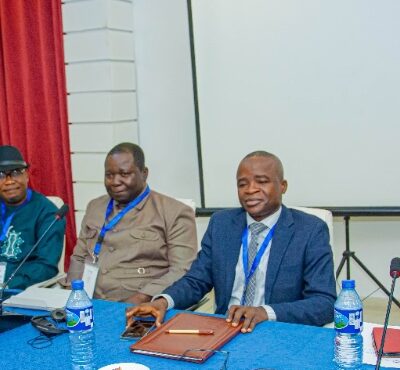
BY OLAPEJU OLUBI
Nigeria’s aviation industry is on the brink of what stakeholders describe as a much-needed transformation, as President Bola Ahmed Tinubu and the Minister of Aviation and Aerospace Development, Festus Keyamo, drive a robust plan to address the nation’s long-standing airport infrastructure challenges.
For decades, these deficiencies have hampered growth, strained airline profitability, and eroded Nigeria’s potential as a regional aviation hub. Now, the government’s push for large-scale upgrades is raising hopes of a new era that could redefine the country’s standing in global air transport.
Speaking at the 29th League of Airport and Aviation Correspondents (LAAC) Annual Conference in Lagos, Air Peace Chairman and Chief Executive Officer, Dr. Allen Onyema, was candid about the scale of the problem.
He described inadequate airport facilities as “one of the most pressing barriers to the growth and profitability of Nigerian airlines,” stressing that the situation has left the nation unable to harness its geographic advantage for regional and international connectivity.
Onyema explained that the absence of proper transit facilities at major airports, particularly Lagos, has for years undermined Nigeria’s ability to serve as a seamless transfer point for international travellers. “Airlines operating in West and Central Africa lose a competitive edge when connecting passengers must clear immigration, undergo customs checks, and recheck baggage simply to transit through Nigeria.
“It’s a process that often drives them to other African airports.”
The result, he noted, is a steady diversion of passenger traffic and revenue to competing hubs across the continent”, he said.
The lack of efficient connectivity, according to Onyema, not only damages the competitiveness of Nigerian carriers but also limits their ability to integrate regional services into broader global networks.
He warned that without tackling the infrastructural deficit, Nigeria’s aviation sector would continue to miss out on opportunities to expand its market share in Africa’s rapidly growing air travel industry.
Against this backdrop, Onyema welcomed the government’s latest interventions, particularly the plan to rebuild Lagos airport to support modern transit operations.
He expressed confidence in the administration’s resolve, saying, “With sustained focus, the country could, within two years, possess the infrastructure needed to compete with Africa’s leading aviation hubs.”
Beyond improving passenger comfort, Onyema argued that the upgrades would also serve as a form of indirect financing for airlines. By reducing operational bottlenecks, cutting unnecessary costs, and creating an enabling environment for sustainable growth, the changes would, in his view, put Nigerian airlines on a stronger footing. “With the right facilities in place,” he said,
“Nigerian carriers could match the success of leading African airlines within the next decade.”
As the government presses ahead with its aviation modernisation agenda, the industry’s anticipation is palpable.
For many, fixing Nigeria’s airports is not merely about new terminals or better runways, but about unlocking the country’s potential to become a genuine aviation powerhouse in Africa, capable of attracting transit traffic, boosting tourism and driving economic growth for years to come.





